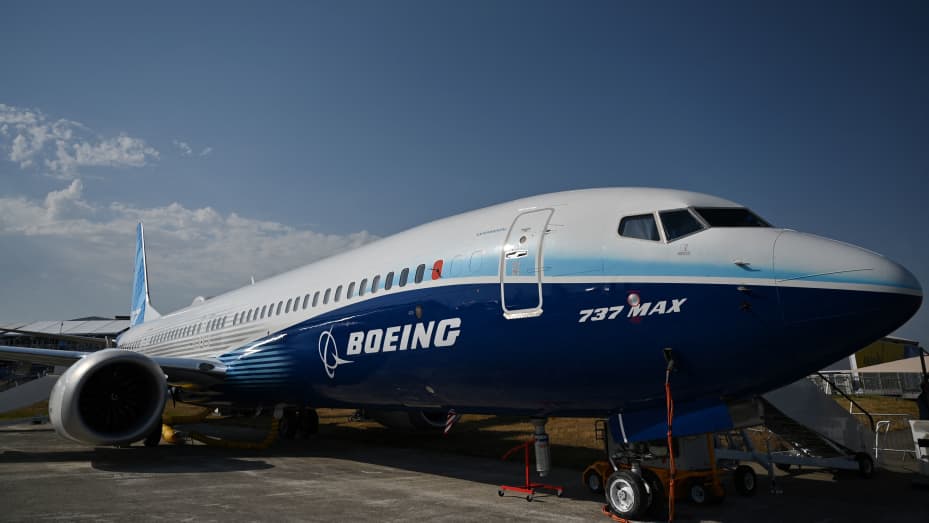
As deliveries fall, Boeing sees its first revenue dip in seven quarters
Following a mid-air disaster in January, the US planemaker BOEING reported an 8% reduction in quarterly revenue to US$16.57 billion on Wednesday, April 24. This is the first decline in revenue in seven quarters.
The US aircraft manufacturer reported first-quarter cash burn, a figure that investors constantly monitor, of US$3.9 billion as opposed to US$786 million in the same period last year.
However, in March, the aircraft manufacturer had projected that its free cash flow utilization would be between US$4 billion and US$4.5 billion, which was more than they had projected in January as Boeing struggles with a serious problem that has forced a management shuffle.
Following a 3.6% increase earlier in the day, shares were unchanged in premarket trade.
The FAA has placed a limit on the manufacturing of Alaska Airlines’ popular 737 MAX aircraft following the disaster that occurred on January 5 on a plane that the airline operated. Additionally, Boeing has been instructed by the FAA to create a thorough plan to solve “systemic quality-control issues.”
Boeing is “in a tough moment” going forward, according to a letter sent by CEO Dave Calhoun, who plans to retire at the end of the year. He did, however, restate that the system was purposefully being slowed down by the corporation in order to increase quality and safety.
Reduced delivery frequency can be challenging for both our clients and our bottom line. But quality and safety must and will come first,” he continued.
Earlier this month, Reuters revealed that a rise in plant inspections by US authorities had caused a dramatic decline in the company’s cash-cow 737 MAX output.
Analysts have cautioned that Boeing’s production and financial targets could be delayed due to the slow delivery pace. Last month, Boeing’s CFO stated that the business will require additional time to meet its 2022 target of having an annual cash flow of roughly US$10 billion by 2025 or 2026.
The objective is regarded as a significant turning point as Boeing attempts to quicken its recovery from a previous crisis following the crashes of two MAX aircraft in 2018 and 2019.
As the US planemaker struggles with supplier shortages “on a few key parts,” the business also anticipates a slower growth in the production rate and deliveries of its 787 widebody jets, according to a document released on Monday.
Despite limited output at Boeing and its rival Airbus, there is still a high demand for new aircraft, even if the European manufacturer gained ground in the narrowbody market during the first quarter.
By year’s end, Calhoun predicted that Boeing will have “largely delivered” 737 and 787 aircraft, generating much-needed revenue. Its defense division, which has been losing money lately, “will be progressing towards more historical levels of performance,” he continued.
In the quarter ending in March, Boeing delivered 67 737 aircraft, a 41% decrease from the previous year. When the aircraft is delivered, the planemakers get the majority of the money.
From a loss of US$1.27, the adjusted loss per share decreased to US$1.13.
All Categories
Recent Posts
Tags
+13162306000
zoneyetu@yahoo.com



